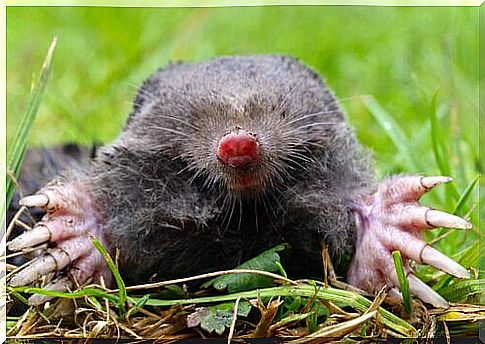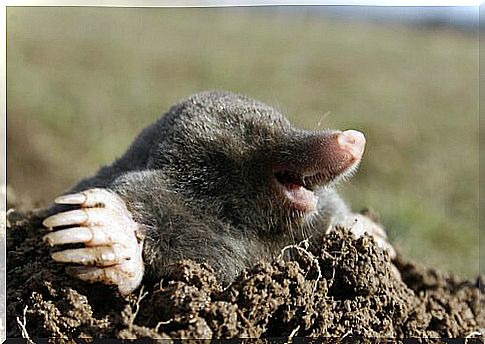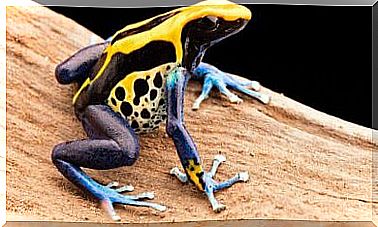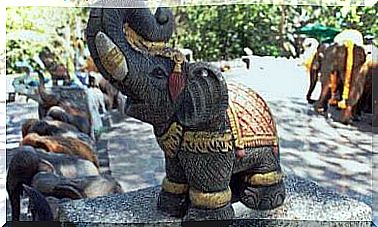The Mole, An Excellent Underground Engineer

The mole is a soricomorphic mammal that lives in the northern part of the planet, mainly underground and shares many habits and characteristics with shrews. In this article we will reveal everything you need to know about this fascinating animal, used to dig deep underground tunnels. In short, a real civil engineer of the Animal Kingdom. Let’s discover the mole together .
Characteristics of the mole
It is a placental mammal which, depending on the species, can measure from 2.5 to 20 centimeters and weigh from 12 to 550 grams. Thanks to its fusiform body, like that of aquatic animals, the mole can live underground without problems.
The eyes are small and covered with skin. Not needing this sense in his underground life, he developed touch more: the muzzle, face, extremities and tail are very sensitive to stimuli.
The legs of the mole are short but very strong, equipped with sharp claws that allow you to dig and build tunnels up to 150 meters long. The palms are oriented forwards and backwards and function as perfect digging shovels.
Food and habits of the mole
The mole is an insectivorous animal whose diet is mainly based on worms, although depending on the time of year it can also eat reptiles, small rodents, roots, tubers and fruit. Its mouth can release toxic saliva which paralyzes its prey. This allows the mole to keep it alive until it decides to eat it.

Since his metabolism is very fast, he has to take in quantities of food corresponding to 50-100% of his body weight every day. It cannot go more than 24 hours without feeding, otherwise it dies. Most moles find food underground, with the exception of the shrew mole , which rises to the surface to eat.
Usually, moles are both diurnal and nocturnal animals, and for every four hours of activity, they sleep for the same amount of time. They are lonely, very elusive and difficult to see. We can only realize that there is a den because of the mounds of earth that appear on the garden.
The plague of moles
People and farmers who live in the countryside or in agriculture consider the mole to be a pest that causes a lot of damage to crops. Its voracious appetite eliminates worms, uproots plants or roots in an often very large territory.

The most popular species of moles
Within the Talpidae family , various ‘tribes’ or species are counted . Below we present those that, at least in Europe, are considered the most widespread and popular:
1. European mole
Also known as the common mole , it lives across the continent and extends as far as Siberia, mainly in forests, meadows, fields and gardens. It measures around 6 inches ( 6 inches), has a short tail, and shares many characteristics with others of its species: pointed snout, small eyes, and blade-shaped front legs.
2. Star-nosed mole
It is distributed throughout North America, particularly in the northeastern United States, on the coast. As the name suggests, it has a different nose that includes 22 mobile and flexible pink tentacles, which allow it to increase its sensitivity when moving and digging underground.
Additionally, this mole is about 20 centimeters long, has short dark fur, sharp claws, and also has a long, scaly tail. It reproduces in spring and summer, the gestation lasts 45 days and each litter is formed by a maximum of 6 young, which are born totally hairless.
3. Hairy-tailed mole
Also known as Brewer’s mole , it is a North American species that prefers open, wooded areas with dry soils. It measures 15 centimeters in length, its skin is dark gray, its eyes are covered in skin, and it has no externally visible ears.
Also in this case, the muzzle is pink like the legs, but its main feature is the small tail of just three centimeters, covered by a very thick hair. It feeds on insects and worms, has nocturnal habits and is mainly a solitary animal.
In Italy there are three very widespread subspecies of mole : the European mole (or common, which we have already talked about), the blind mole and the Roman mole.









